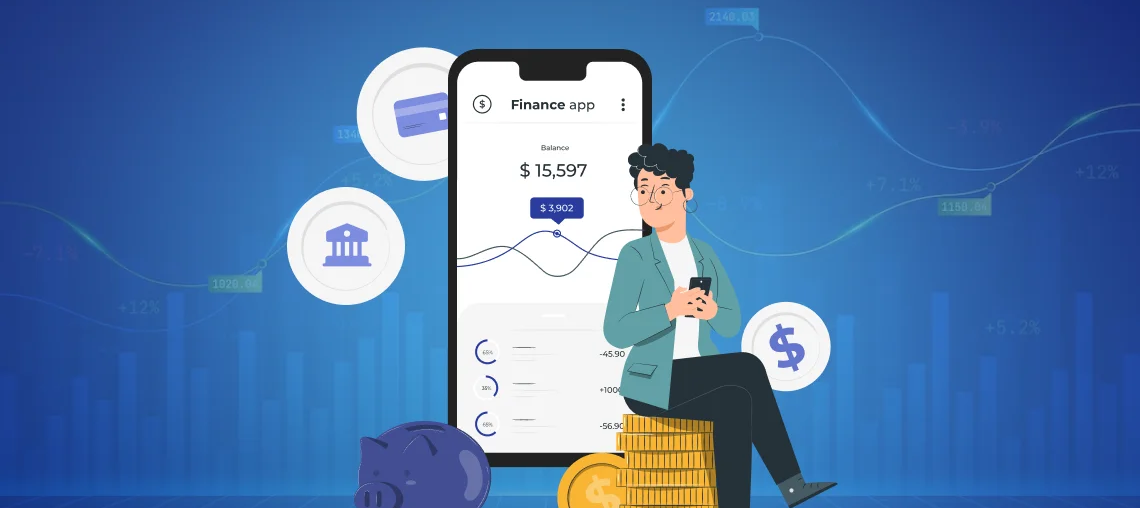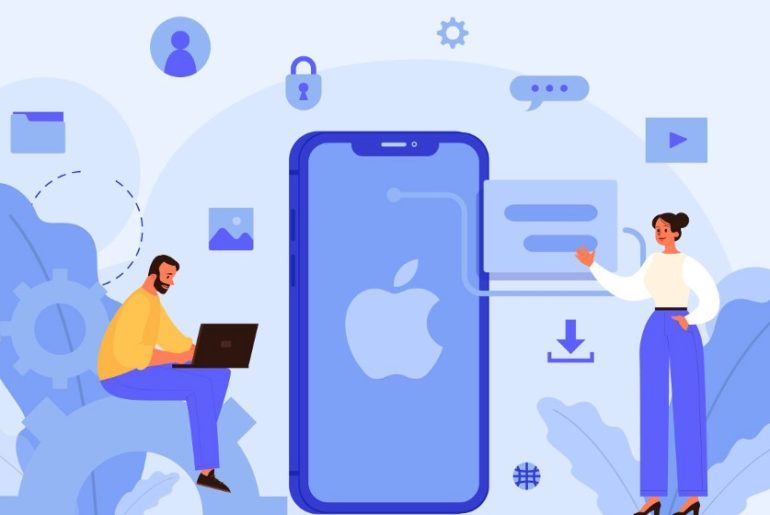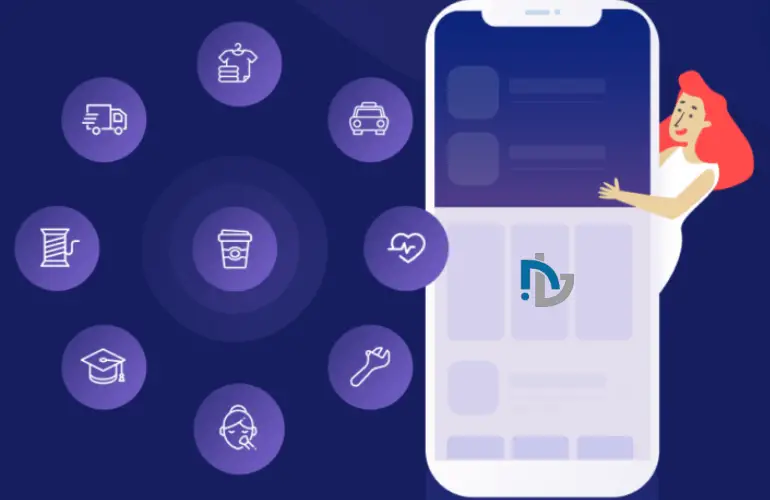Finance app development has emerged as a popular and indispensable segment of the fintech industry. As we delve into the year 2023, let’s explore the statistics, most sought-after types of financial apps, current trends, and tendencies shaping the development landscape. Additionally, we’ll delve into the essential aspects of starting your own finance app development journey, including requirements and potential risks. Lastly, we’ll provide valuable advice on finding the finance app development services to bring your vision to life.
Statistics in the Fintech Industry
Before we dive into the captivating world of finance app development, let’s take a moment to examine the compelling statistics that underscore its immense popularity and significance:
1. Unprecedented Growth: The fintech industry continues to experience explosive growth, with finance app development serving as a catalyst.
2. A Global User Base of Epic Proportions: The number of smartphone users worldwide has reached staggering heights, providing an expansive market for finance apps.
3. Surge in Mobile Payments: As digital payments gain tremendous traction, the use of finance apps for managing transactions has become the new norm, fueling the demand for app development.
4. Investment Frenzy: Venture capitalists and investors are channeling substantial funds into fintech startups, recognizing the vast potential of finance app solutions.
Popular Types of Financial Apps
Now, let’s explore some of the most sought-after types of financial apps that are gaining traction in the dynamic landscape of 2023:
1. Mobile Banking Apps: With their unmatched convenience and accessibility, mobile banking apps have become an absolute must-have for individuals and businesses alike. They offer an array of features, including balance inquiries, fund transfers, bill payments, and more.
2. Personal Finance Apps: These apps empower users to track their expenses, create budgets, set financial goals, and gain valuable insights into their spending habits. Equipped with robust analytical tools, they enable users to make informed financial decisions.
3. Investment Apps: Designed for both novice and seasoned investors, these apps provide a comprehensive platform to manage portfolios, track stocks, conduct market research, and execute trades, all within the palm of one’s hand.
4. Digital Wallets: Embracing the journey toward a cashless society, digital wallets have soared in popularity. These apps allow users to securely store payment information and effortlessly carry out transactions, be it online or at physical stores.
5. Peer-to-Peer Payment Apps: Revolutionizing the way we split bills or settle debts, peer-to-peer payment apps facilitate quick and seamless money transfers between friends, family, and acquaintances.
Trends and Tendencies in Finance App Development
To maintain a competitive edge in the dynamic finance app development landscape, it is crucial to be cognizant of the latest trends and tendencies shaping the industry in 2023:
1. Fortifying Security Measures: Given the mounting concerns over data privacy, finance apps are bolstering their security measures by implementing biometric authentication, encryption, and two-factor authentication to safeguard user information.
2. Harnessing the Power of Artificial Intelligence: AI-powered chatbots and virtual assistants are revolutionizing customer service in finance apps. These intelligent entities offer personalized recommendations, address user queries, and provide real-time insights.
3. Prioritizing User Experience: Developers are placing significant emphasis on crafting intuitive and user-friendly interfaces, ensuring a seamless and delightful experience for users as they navigate through diverse financial functionalities.
4. Integrating Open Banking: Open banking APIs are enabling seamless integration of third-party financial services within finance apps. Users can now manage multiple accounts and access a broader range of financial tools from a single platform.
5. Embracing Blockchain Technology: The secure and transparent nature of blockchain has sparked its adoption within the finance sector. Finance apps are leveraging blockchain for secure transactions, smart contracts, and identity verification.
Embarking on Finance App Development: Requirements and Risks
Embarking on a finance app development journey necessitates meticulous planning and consideration. Here are some essential requirements and potential risks to keep in mind:
1. Crystal-Clear Vision and Objectives: Define the purpose and target audience of your finance app. Conduct extensive market research to identify gaps and seize opportunities.
2. A Competent Development Team: Assemble a team of seasoned developers, designers, and testers well-versed in the intricacies of finance app development. Their expertise will be instrumental in crafting a robust and user-friendly application.
3. Compliance with Regulatory Standards: Ensure your finance app adheres to relevant financial regulations, such as Know Your Customer (KYC) and Anti-Money Laundering (AML) requirements, to foster trust and legality.
4. Scalability and Security: Construct a scalable architecture capable of handling increasing user demands while prioritizing data security and privacy to safeguard sensitive financial information.
5. Monetization Strategy: Determine how you intend to generate revenue from your finance app, whether through in-app purchases, subscriptions, or advertisements.
Choosing the Right Developer
Selecting the right developer is paramount for the success of your finance app. Consider the following factors when making your decision:
1. Experience and Track Record: Seek developers with a proven history in finance app development. Assess their portfolio to gauge the quality and functionality of their previous projects.
2. Technical Proficiency: Ensure the developer possesses the requisite technical skills and knowledge to transform your app concept into a reality. Proficiency in relevant programming languages and frameworks is essential.
3. Effective Communication and Collaboration: Seamless communication and collaboration are key to a successful development process. Opt for a developer who is responsive, proactive, and willing to understand your requirements and goals.
4. Client Testimonials: Seek feedback from previous clients or peruse testimonials to evaluate the developer’s professionalism, reliability, and ability to deliver projects on time.
5. Budget Considerations: While cost is a vital aspect, it should not be the sole determinant. Strike a balance between your budgetary constraints and the developer’s capabilities and expertise to ensure a fruitful partnership.
Conclusion
As finance app development continues its upward trajectory in 2023, it presents a myriad of opportunities and challenges. By staying informed about the latest trends, comprehending user preferences, and making well-informed decisions throughout the development process, you can create a successful and user-centric finance app. Remember, selecting the right developer who aligns with your vision and goals is crucial. So, embark on this exhilarating journey to redefine financial management in the digital era and revolutionize the way we engage with finance.









